THIS VINTAGE JUNGLE POST first appeared in 2017. Because it was popular with visitors, I am sharing it again now. Some information may have changed since it was originally posted.
I STARTED PLAYING Warhammer 40,000 when it first arrived in the United States in 1987. For many years before and since then, though, I diligently watched and followed the National Football League (“American” football, for you folks outside the U.S.), and over the years, I’ve noted the similarities between the games. Let me pass along some things I’ve learned about football, to hopefully improve how you play 40K.
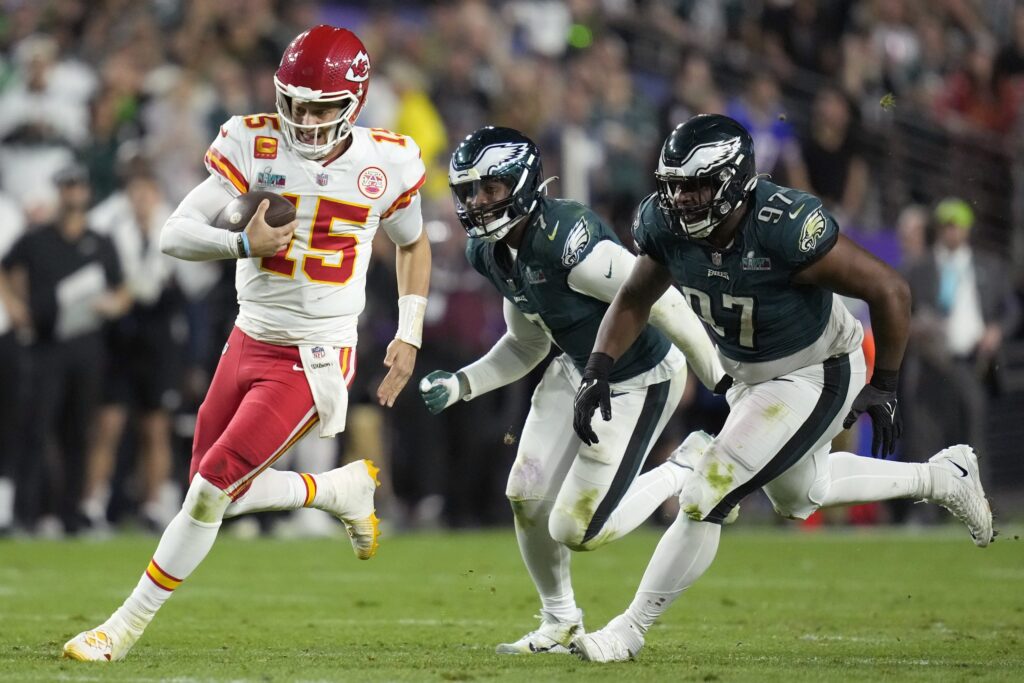
You Need Good Players
Talent is crucial for an NFL team: if an organization doesn’t have good players (particularly a quarterback), it can’t succeed. Even the “lousiest” player on the “worst” team is more gifted than almost anyone you will ever meet in life—and yet, that’s often still not enough in the hyper-competitive NFL.
Because the NFL only drafts the crème de le crème of athletes, good players must, in addition to physical skills, be intelligent, disciplined, hardworking, and well-coached. Only they will win games and championships.

You might think that when I apply the phrase “you need good players” to 40K, that I’d be talking about you, the guy or gal moving the miniatures and rolling the dice. Actually, I’m referring to the units in your army: they are your “players” who need to be at their best to win you games and tournaments.
Even if you prefer “fluffy” armies, you should still optimize your unit choices—including size and wargear—to give yourself the best chances to do well, because no one likes being the other player’s punching bag.
Like it or not, in any codex, some units are more useful, more effective, than others—and in certain books, a few or even several units are downright wretched. Choose wisely and spend your points wisely so that you have the best “players” on your “team.”

Know the Rules
To those who do not follow the game, American football may look as unruly as two clans of Orks slugging it out. Actually, there are a bewildering number of rules, and breaking most of them result in penalties that cost teams crucial field position, lose downs (think of them like phases in a game turn), or even have players ejected.
Other rules cover aspects of ball possession, scoring, issuing challenges to rulings by referees, timekeeping, etc. It’s a lot to know and keep track of in the heat of the moment, but the very best coaches and players do so and use the rules to their advantage.

Likewise, 40K has a huge number of rules that go well beyond the basics of movement, shooting, assault, and morale. Unit types have their own specific rules, as do vehicles, characters, buildings, terrain, weapons, wargear, psykers and psychic powers, missions, and on and on and on.
At a minimum, you need to know all of the rules for all the units that you’re fielding (including their guns and toys), as well as those that apply to the scenario you’re playing. That’s already a lot to know and keep track of, but it wouldn’t hurt to know at least some for the opposition.
Scout the Other Team
NFL coaches and players spend countless hours reviewing film of their opponents, to glean the other teams’ strengths and weaknesses, formations and plays, schemes and tendencies. The aim is to know the other guys so well that when they line up in a certain way, everyone on the team will instantly recognize what the opponents are up to, and know what must be done to thwart them.
Teams that have played each other many times—such as divisional rivals—know the enemy very, very well. The New York Jets, Miami Dolphins, and Buffalo Bills all knew that New England Patriots quarterback Tom Brady liked to throw quick, short passes, getting rid of the ball as soon as possible.
The Baltimore Ravens, Cincinnati Bengals, and the Cleveland Browns knew that in contrast to Brady, Pittsburgh Steelers quarterback Ben Roethlisberger liked to maneuver in the pocket, take hits, and hang on to the ball as long as possible for the chance to throw a long—and often demoralizing—bomb down the field.
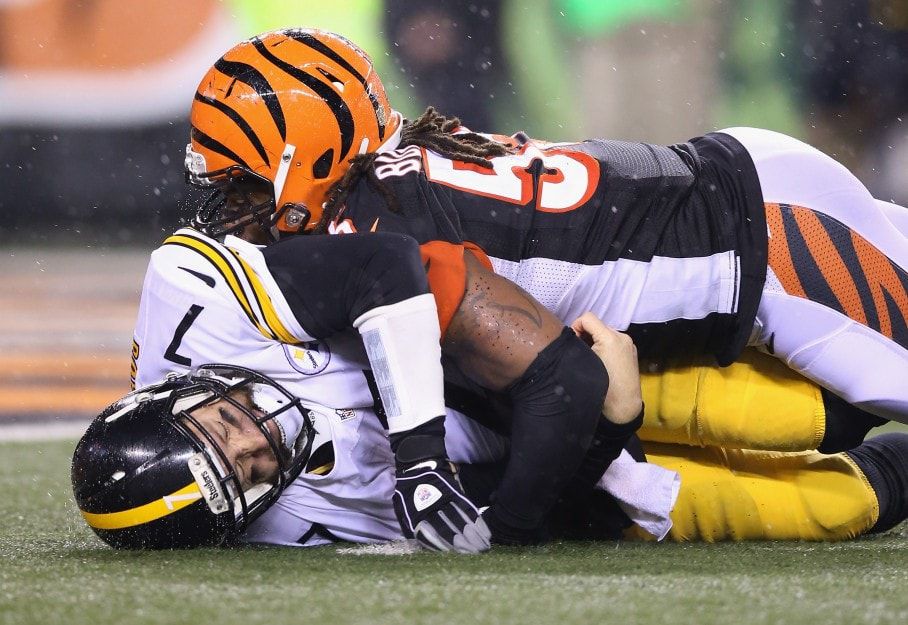
So, too, in 40K. Oh sure, you can waltz into a game not knowing a thing about the other army, but as the famous Chinese general Sun Tzu (author of The Art of War) said, “If you know yourself but not the enemy, for every victory gained, you will also suffer a defeat.” No NFL team would go into a game without having watched film of the other guys, so you need to know as much as you can about the opposing army, as well as your opponent.
While it would be nice to get a detailed army list well in advance of the game so that you have plenty of time to study it, that’s usually not possible. But once you find out what you’re up against, you should, at the very least, know and expect a few basic things.
Such as, T’au armies will certainly have lots and lots of shooting ability, but be extremely vulnerable to assaults. That Orks will almost always come in large numbers, and have fearsome close combat skills. That Drukhari will be fast and have lots of dirty tricks, that Aeldari excel at just about anything, and that Space Marines are tough as nails.

If you’ve been playing for more than 20 minutes, you probably know all those things, but the more details about the army and its particular units that you can uncover, the better off you are.
If you play regularly against the same gamers, then you should know them very well, just like divisional rivals in football do. My buddy Pat and I have been throwing dice together since 40K arrived in the Eighties. I know that no matter what force he’s playing, he’s a close-combat junkie who rarely resists the urge to get into melee; that he’s excellent at improvising game plans; he is not averse to taking risks; and that he’s fond of one or two big, killer units that do most of the heavy lifting for his army.

Pat knows that I have a fondness for bringing lots of Troops; that my armies are frequently light on anti-tank capability (a failing of mine); that I suck at deployment (another failing); but that I’m a meticulous planner. See what I mean about knowing your opponent?
Have A Game Plan
NFL teams don’t go into a game and just “wing it”: after they’re done studying the other team, they draw up a plan to defeat them. If the other guys have a star player, they’ll try to find a way to neutralize him: maybe double-cover a receiver, or put in a beefy fullback to slow down a linebacker.
If the other team has a fearsome pass rush, a smart coach will call for extra blockers and to have his QB throw the ball quickly, or lean heavily on a running game, which will make the pass rush superfluous. If the other team is great at rushing, the coach will put 8 men in “the box,” up close to the line of scrimmage, to stuff the run and force the QB and the receivers to connect on passes.
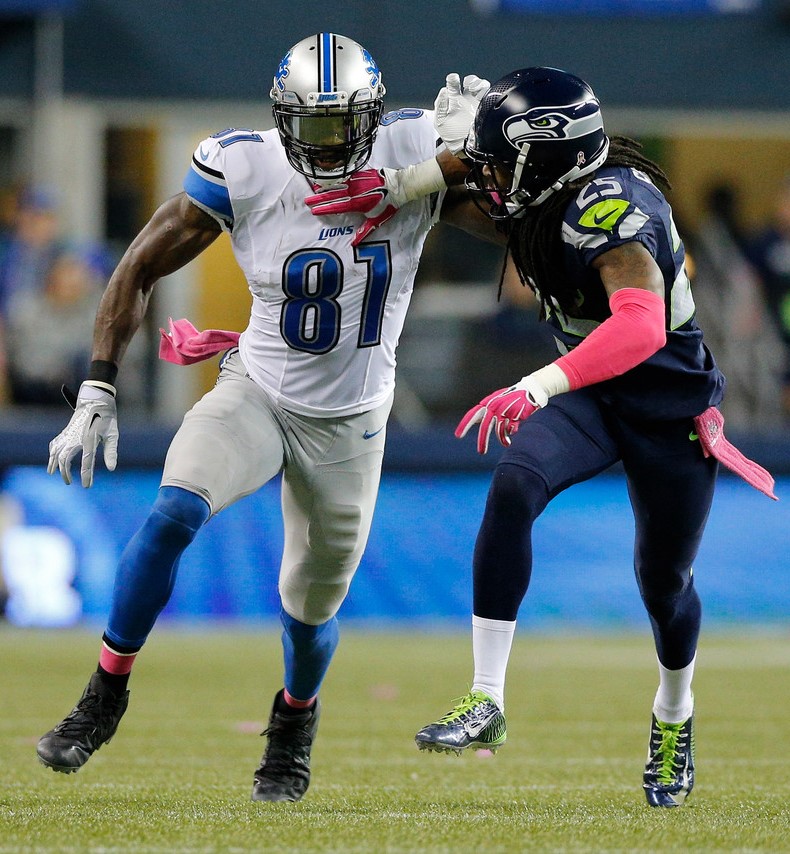
In playing 40K, you won’t have the advantage of game film and a team of expert coaches to help you come up with your plan (heck, at a tournament, you won’t know who and what you’re up against until the last minute), but at the very least, you need to know what you’re going to be doing.
What purpose does each unit serve—are they supposed to take objectives, shoot vehicles, get into hand-to-hand with enemy infantry—and do they have what they need (numbers, weapons, wargear, transports) to be successful? Where will they be deployed at the start of the game? What weaknesses do they need to compensate for? What weaknesses of the enemy can they exploit? And so on.
It’s a Game of Inches
Football is played on a field 120 yards long (counting the end zones) and 53 yards wide, but a single inch can make all the difference, either on an individual play, or even for the whole game. If, in the course of four downs, the offense only moves the ball 9 yards, 2 feet, and 11 inches instead of a full 10 yards, they lose the ball to the other team.
If a receiver has a portion of their foot out of bounds when he catches a ball, the catch doesn’t count, no matter how far it went. Similarly, if a runner steps even a smidge out of bounds, the ball stops where he went out. On the flip side, if even the tip of the ball crosses the end zone line, it counts as a touchdown, and the team scores points.

40K, too, is a game of inches—literal inches. If a gun is even a fraction of an inch out of range, it will not hit its target. If a unit is ¼” out of charge range, it cannot be assaulted. If you’ve had more than three games under your belt, I’m sure you can think of plenty of instances where an inch or less was a crucial difference.
In football, good players are always aware of where they are on the field. In particular, receivers often run precise routes, with little margin of error: a few inches can mean not being able to reach a pass to catch it, or worse, having a pass meant for them intercepted.
During a 40K game, always have at least a basic estimate, in inches, for every unit on where they are in relation to friendly and enemy units; as well as where they need to be to advance and engage the opposition, retreat to avoid the same, move to take cover or block line of sight, or to secure objectives.
40K’s a game of inches—always keep your tape measure handy!
Manage the Clock
If you follow football—heck, maybe even if you don’t—you probably know this story. Up by 8 points with 4 minutes and 40 seconds left in Super Bowl LI, the Atlanta Falcons had a first down on the 22-yard line of the New England Patriots. At this point, their opponent was not the team with the silver helmets, but the time remaining.
Already well within range of their field goal kicker, Atlanta should have run the ball three times, which would either have: a) used up at least 1 minute and 30 seconds, probably more like 2 full minutes; or b) forced the Patriots to use all three of their timeouts. Then Atlanta could kick an easy field goal to be up by 11 points with (probably) 2 minutes or less left in the game, not nearly enough time for even the great Tom Brady to score twice to tie or win the game.
If you watched or heard about that game, you know, of course, what happened: Atlanta ran the ball on first down, losing a yard, but chewing up clock time. So far, so good. But then the Falcons eschewed the sound and sensible strategy I just described, and tried passing. A Patriots defender sacked Matt Ryan, the Atlanta QB, on second down, losing 12 yards for the Black & Red.

On third down, the Falcons lost 10 yards on a penalty. On third down again, out of field goal range and needing 33 yards for a first down, the Falcons attempted to make up at least some of that with a pass, which was incomplete. Atlanta punted the ball back to New England with 3:30 left in the game, plenty of time for Brady & friends to tie it, which led to the Pats’ overtime win.
Just like NFL teams do (or ought to), watch and manage “the clock:” always know what turn it is, and how much time you have left to accomplish your objectives. Even if the mission you’re playing has a variable number of turns, don’t put your hopes on a game going into extra turns.
If part of your plan is to have an infantry unit cross the board to take an objective deep in the enemy’s deployment zone, start moving them that way on Turn 1; or give them a transport (the faster, the better); or have them forgo shooting to run; or avoid getting caught in close combats that tie them up.

Speaking of close combat, it’s usually good to know what turn it is so that your assault guys don’t get stuck standing out in the open in a kill zone where the enemy’s shooting can blast them to pieces. If you’re charging (which, of course, you do on your turn), maybe you don’t want your mob of 30 Ork Boyz to crash into 5 Guardsmen, who—unless the Dice Gods decide otherwise—will surely die and get wiped out, leaving your Boyz hanging out to dry when the rest of the Astra Militarum get to shoot on their turn.
Instead, maybe your Boyz should charge the much-tougher Ogryns, who are more likely to hang in there and keep fighting into the other guy’s turn, protecting your Boyz from being shot. Then you can (hopefully) polish off the Ogryns during the IG player’s Assault Phase, and be able to move, shoot, and charge your surviving Boyz during your next turn.
Play the Percentages
As a Steelers fan, this one still burns my ass. January 17, 2016, AFC Divisional Round playoffs, Pittsburgh Steelers at Denver Broncos. Third Quarter, Stillers leading 10-9, the Black & Gold with 3rd and 5 at the Bronc’s 10-yard line. Roethlisberger took the snap out of the shotgun, either didn’t see or ignored a wide-open Heath Miller at the Broncos’ 4-yard line (which would have made it 1st and Goal), and tried a pass to a double-covered Martavis Bryant in the end zone.
Not surprisingly, the two defenders for Denver—who had the top-ranked defense in the NFL that year—broke up the pass, and the Steelers had to settle for a field goal in a game in which either team could only manage to score one touchdown each. The Broncos outlasted the Steelers, winning 23-16, and went on to win the Super Bowl that year.
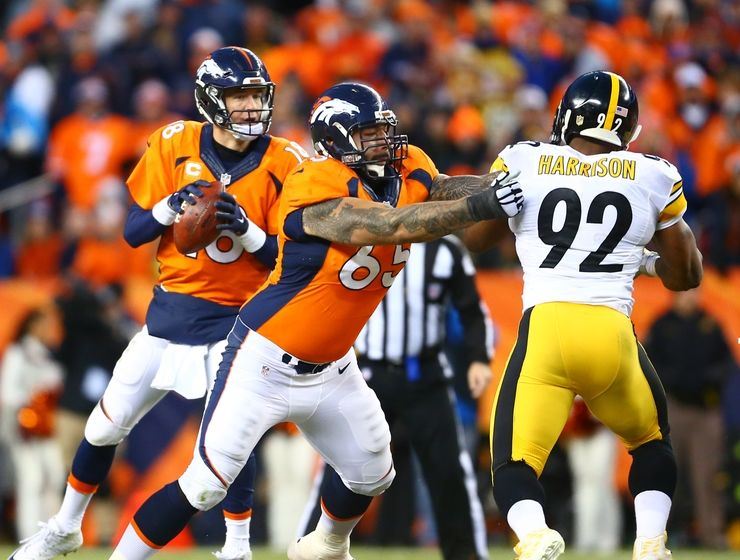
Instead of tossing an easy pass to the always sure-handed Miller, which would have moved the chains and gotten the Steelers that much closer to a touchdown, Big Ben gambled on a longer throw against two of the best players on the best defense in the NFL. This is what we call a “low-percentage play,” in that, it had a very small chance of succeeding. The throw to Miller wouldn’t have made the highlight reel, but it would have set up the Steelers for a much-needed touchdown.
When you play 40K, know the percentages and use them to your benefit. You have a substantial advantage over football coaches in that 40K uses dice, for which statistics can extrapolate likely outcomes. I’m no math major, but you don’t have to be one either to know that 30 charging Orks with sluggas and choppas are a whole lot more likely to kill most, if not all, of a 10-man Space Marine Tactical Squad than, say, 3 charging Guardsmen are. I’ll let those of you who are or were math majors calculate the exact percentages.
Likewise, if you need to stop enemy vehicles, you’re going to have a much better chance of doing so with, say, three Devastator Squads packing four lascannons each, as opposed to one guy with a krak grenade. Sometimes, you’re forced to gamble—the only model in position to stop that Chaos Rhino from getting into your deployment zone and tying or winning the game is that one guy with the krak grenade—but you don’t want to make a habit of relying on a few lucky dice rolls to succeed.
Remember, “he who rolls the most dice, wins.” Know the percentages and make sure you’re maximizing your dice rolls so that you have the best chance.
Pressure the Quarterback
Though I hated the dude with a passion that would melt an earthmover casted from pure adamantium, Tom Brady is the best quarterback I have ever seen. And yet, the flaw in Brady’s game—as was exposed during Super Bowl XLII, against the New York Giants—was that he didn’t like getting hit. The more he was pressured, his accuracy dropped off; his decisions got shaky; and he started losing his cool, screaming at his lineman like a candy-ass diva (in marked contrast, Ben Roethlisberger’s statistics actually got better after he’s took a shot or two).
If teams didn’t pressure Brady, he carved them up, as do so many other QB’s in today’s pass-happy NFL.
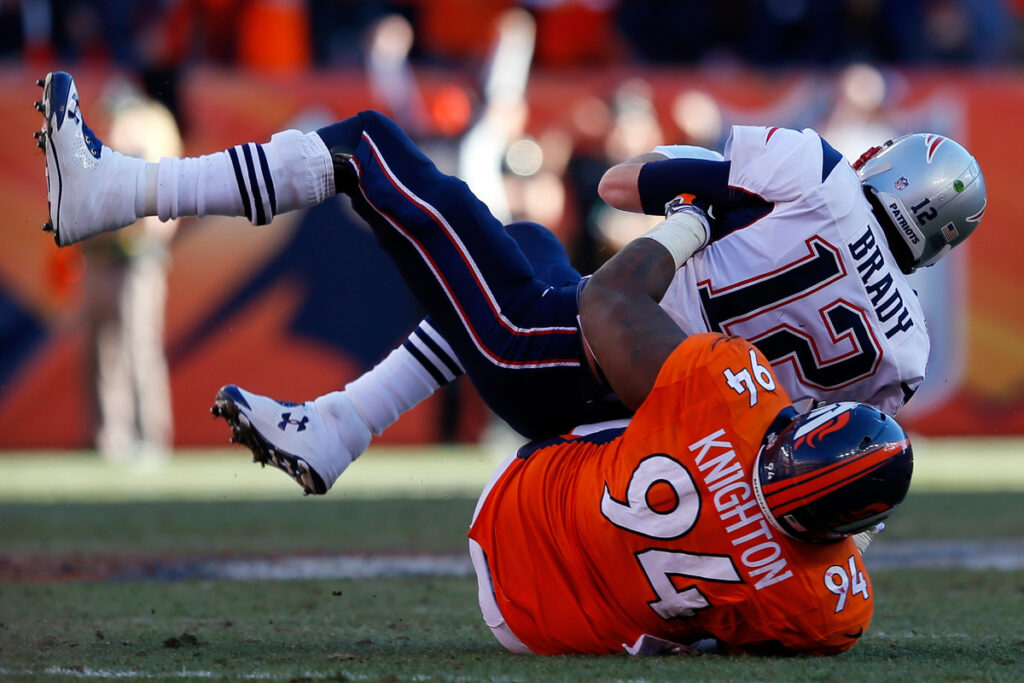
Previously, I compared NFL players to 40K units, so you might think that when I say, “pressure the quarterback” in terms of Warhammer, that I’m talking about the other army’s Warlord. Nope! Actually, I’m talking about the person you’re playing against.
Lots of people do well at 40K when they can focus and stick to their game plan. But 40K is considerably harder when their plan has gone out the window, they’re freaking out about how your army is chewing through theirs like a ravenous Rottweiler chowing down on a bag full of White Castle sliders, and they have no idea what to do next. That’s what I mean by, “pressure the QB.”
While it’s gauche (and illegal in every state of the Union that isn’t named “Texas,”) to go all Ray Lewis and body slam one’s opponent during their Movement Phase, one can nevertheless pressure the other player by several stratagems.
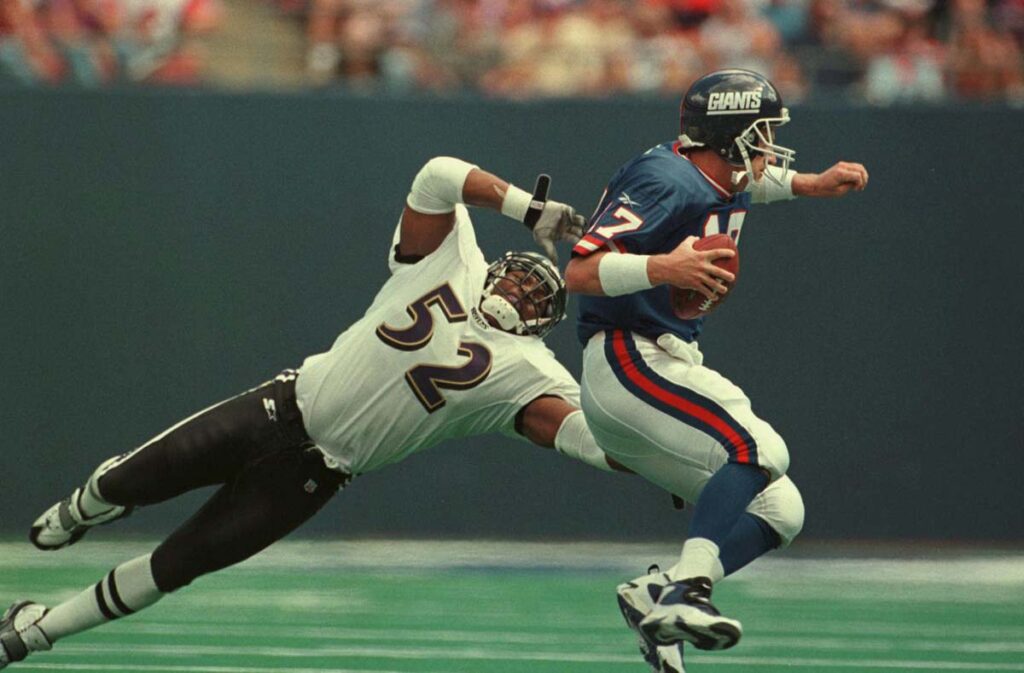
An easy one (and a favorite of mine) is “Pick Your Poison,” where I include at least two, sometimes three or four “killer” units in my army that my opponent needs to deal with simultaneously. It’s hard to stay cool and make good decisions when, say, you have two winged Hive Tyrants AND three Tyranid Harpies going all Stuka diver-bomber on your army.
Another good one—especially if you play the same people more or less every time—is to pull off something totally unexpected, especially if it uses rarely-fielded units or wargear.
I’d rather let my army exert all the pressure, but I’ll throw out more examples for you. I’ve seen other players do things like roll dice continuously during the opponent’s turn, just to make noise and be distracting (humming, whistling, and fidgeting are also good for that); engage in trash talk (my pal Ken likes to scoff, “Nice shooting, Tex” when I botch “to hit” rolls); act as if whatever the other person is doing is exactly what the first one wants (“Oh, no, by all means, PLEASE Deep Strike your Terminators behind my lines”); repeatedly ask their opponent, “Are you sure you want to do that?”, and so on.
Don’t Do Stuff You Should Know Won’t Work
I might be beating a dead horse, but—ah, screw it, give me that baseball bat and let me take a couple whacks to the late, great old gray mare. Few teams could match Tom Brady and the New England Patriots’ high-caliber offense head-to-head, trading touchdowns in a shootout, so the key to beating the Pats back then was to not fight fire with fire.
Instead, teams were better served to play ball control, treating the clock as the main opponent, and winning the time of possession by frequently running the ball, completing short passes that end in bounds, and steadily moving the chains in long drives that culminated in touchdowns.
Not only did this strategy rest one’s defense (who needed all the help they can get against Brady & Pals), but it wore down the Pats’ defense (usually no slouches, though they often got overshadowed). Best of all, even the GOAT could not score if he was sitting on the bench.

When Marcia Brady inevitably came back onto the field, the goal was to break the rhythm of the Pat’s machine-like offense. Jam the speedy receivers at the line of scrimmage, play man-to-man as much as possible, and pressure Brady until he got all pissy and started bitching to the refs for flags like a 5-year old crying for ice cream.
There it is: a simple game plan that was admittedly much easier said than done, but it was pulled off before, notably by the New York Giants in two Super Bowls, by the Denver Broncos in the 2015 AFC Championship, and by the Atlanta Falcons in the first half of Super Bowl LI (subtitled: “The Greatest Choke Job Of All Time”).
For many years, the Steelers (like many other teams in the 2000’s) got spanked whenever they played the Patriots, up until a game at Heinz Field on October 30, 2011. To the delight of the Black & Gold’s fans, the Steelers pretty much followed the blueprint I described, and beat the Pats 25-17. Many sports analysts said that the Steelers had “solved the problem” of the Patriots.
Yeah, right. Pittsburgh inexplicably never again replicated that game plan against the Patriots, and the results were predictable. In 2013, New England beat them 55-31; in 2015, the Pats won 28-21; in 2016, the Patriots won 27-16 in the regular season, and 36-17 in the AFC Championship.
That last game was more of a blowout than the score would indicate, with the Steelers playing a soft “zone” defense with minimal pressure on Brady: 19 times in the game, Pittsburgh only rushed three men against New England’s excellent offensive line. It’s as if the Steelers wanted to be the Washington Generals to the Pats’ Harlem Globetrotters.

Belichick: “Maybe you’d do better if you didn’t bring the same weak s**t every time”
Bug-eyed idiot Mike Tomlin (head coach of the Stillers) seemingly never learns, always trying stuff he should know won’t work. When you play 40K, don’t be like Mike.
Don’t try to craft an “assault” T’au army. Don’t sink a lot of points into one unit if you’re playing a small (1000 points or less) game. Don’t try to outshoot the Astra Militarum unless you’re playing Aeldari or the aforementioned T’au. Don’t bring lots of lascannons against horde armies. Don’t field minimal-sized Ork mobs. If you’ve been playing for more than a year, you should know better than to try stupid crap like that.
One or Two Plays Can Decide the Whole Game
On September 19, 2005, the visiting Washington Redskins were down 13-0 to their hated rival, the Dallas Cowboys, with less than four minutes to go in the game. To all present in Texas Stadium, it looked like another victory for the Boys, but on 4th and 15, Redskins quarterback Mark Brunell threw a 39-yard touchdown pass to wide receiver Santana Moss.
The Redskins stopped the Cowboys to get the ball back, and on their first play from scrimmage, Brunell connected again to Moss for a 70-yard touchdown. Just like that, with two passes, the Redskins turned the game around and won.
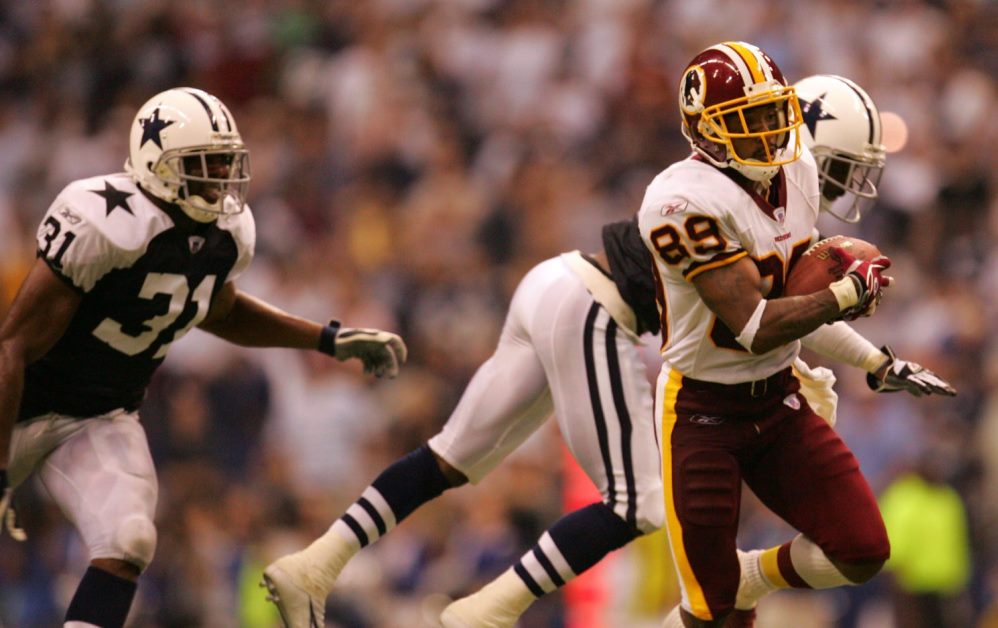
So, too, in 40K. The lone surviving member of a squad makes a Morale check to avoid falling back off the table, denying the opponent a crucial Victory Point. A vehicle in cover shrugs off a barrage of lascannon hits and stays intact to claim a crucial objective. A mighty hero—or a contemptible blackguard—fails an armor save, giving a point for Slay the Warlord to the other player. Desperately-needed reinforcements fail to arrive from reserves until it’s much too late. And so on.
One or two decisions, one or two maneuvers, one or two dice rolls—lucky or unlucky—can mean the difference between winning and losing. Be mindful of that, particularly when it’s your turn. Remember to play the percentages (as I discussed above) to tip the odds in your favor so that if it comes down to a single “play” or two, you’ll make it and win the game.
A Bit of Trickery Can Help…
The Pittsburgh Steelers sealed the deal on Super Bowl XL, winning their fifth Lombardi Trophy, with a bit of razzle dazzle in the 4th Quarter. Up 14-10 on the Seattle Seahawks, Steelers quarterback Ben Roethlisberger pitched the ball to running back “Fast” Willie Parker, who instead of running (he had earlier scored on a 75-yard TD run), handed the ball to wide receiver Antwaan Randle El on a reverse. Randle El stopped well behind the line of scrimmage and threw a beauty of a pass to Hines Ward, who bounded into the end zone untouched.
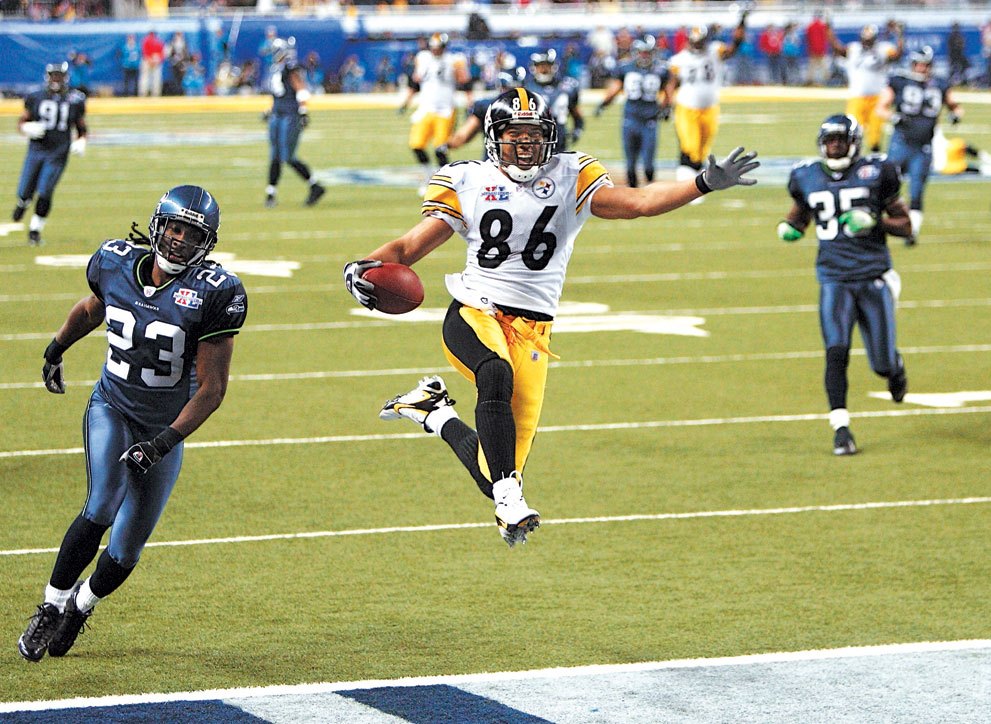
It worked because the Seahawks never saw it coming. If you’re even a casual viewer of football, you’ve no doubt seen similar trick plays: they don’t always succeed, but when they do, they’re poetry in motion, and often decide the game.
If you can manage it, a bit of trickery can give you the edge in 40K. Perhaps you field a unit your opponent is unfamiliar with, or one that they are convinced “sucks.” Maybe you use a unit in an unfamiliar way: say, plopping down empty Drop Pods in front of an advancing Ork army to make them go around into fire lanes you’ve set up with your Devastators. Or you adopt an unexpected stratagem (“Wait—why aren’t you advancing your Tyranids?”) to befuddle the other player.
I’m sure you can think of plenty of examples, and I’m sure you can come up with plenty of tricks of your own, because after all, stupid players don’t visit the Jungle. An unexpected move might serve you well, but…
…But Don’t Get Cute
On October 9, 2016, the Baltimore Ravens were at home, leading the Washington Redskins 10-6 with less than five minutes remaining in the first half. The Ravens lined up for a 34-yard field goal, an easy shot for Justin Tucker, one of the best—if not the best—kickers in NFL history.
Rather than go for the sure-bet three points that would put the Ravens up 13-6, head coach John Harbaugh decided to get cute and called for a completely unnecessary fake field goal attempt that no one on the Redskins team fell for. They—and anyone else who had ever seen Tucker kick before—were tipped off that it was a fake because Tucker set up opposite to how he usually does. Durr! The Ravens went on to lose a very winnable game, 16-10, which contributed to them missing the playoffs for the second season in a row.

When you play 40K, resist the urge to get cute, to try to do something “clever” not out of necessity, but just for the sake of being “clever.” This admonition differs from, “Don’t do stuff you should know won’t work,” in that “getting cute” isn’t so much about not knowing, as it is about thinking that somehow, the stunt you’re trying to pull off will magically work. Which, of course, it almost never does, often with spectacularly horrible results.
“Getting cute” goes hand-in-hand with showing off, which rarely earns one friends, and invites only scorn when one’s “look-at-me” gambit falls to pieces. Don’t do it. Just don’t.
Sometimes, the Other Team Just Gets Hot
On January 10, 2016, the NFC East Champion Washington Redskins were hosting the Green Bay Packers in the playoffs. At the end of the 1st Quarter, the Redskins were holding their own against the Packers, up 5-0, but in the 2nd Quarter, Green Bay got hot on both sides of the ball, scoring 17 points and throttling the Skins’ offense. The score was a respectable 17-11 at halftime, but in the second half, the Pack never let up, and the final score was 35-18.
The Redskins were a decent team: they had finished the regular season 9-7, bitch-slapping their rivals the Cowboys 34-23 the week before. Green Bay had not been all that, ending the season at 10-6, but having lost the previous two games by a combined score of 58-21. Nevertheless, starting in the 2nd Quarter, Green Bay could do no wrong, and the Skins’ fate was sealed.

This will happen in 40K as well, and if you’ve played more than three games, you’ve lived it. Your dice grow cold, the other guy’s dice get red hot. Your reserves aren’t coming on until Turn Four, your guys are missing shots, you’re bricking “to wound” rolls (I really ought to know better than to say, “Anything but a ‘1’” when rolling for lascannons and melta guns), you’re botching difficult terrain and/or charge distance rolls, etc.
Meanwhile, on the other side of the table, the Ork Shoota Boyz are tossing out 5’s and 6’s “to hit” like they were beads at Mardi Gras; the Trukks are surviving what little heavy weapon fire of yours actually hits and penetrates; and the Boyz are maxxing out on charge range and hitting and wounding in close combat. You know it’s bad when Gretchin are taking out your Terminators in the Assault Phase.

What can you do when the other team get hot? Not a whole lot. Thanks to dice, some games are just like that, and you’re going to have to suck it up, keep your temper (for me, that’s sadly much easier said than done), and hope things get better. But even if a game is rapidly going south, hang in there, keep fighting, and…
Make Halftime Adjustments
Between the 2nd and 3rd Quarters of every NFL game, there’s a “halftime” period of about 15 minutes, and during that time, coaches are making adjustments to their game plans to counter the other team’s advantages or to exploit a newly-discovered weakness. The New England Patriots (yeah, THOSE guys again) made masterful halftime adjustments in Super Bowl LI to come back against and defeat an Atlanta Falcons team that had been curb-stomping them for the first two quarters.
When I’m playing 40K, I like to pause for a few moments during Turn 3, between the end of the first player’s turn and the start of the second, to assess how the game’s going. I start thinking about what I need to change or continue doing to see my forces through the end of the game. By the time Turn 4 rolls around, I should have units either on or approaching objectives I want to take. If the enemy army is moving up one of my flanks, I want to divert units that way to stop or at least delay them. If I seem to have the game in hand, I need to keep pressing to ensure victory.

I also take a short break and do this sort of adjusting at the start of the last turn: consider that going into the “two minute drill” to win or lock up the game. Regardless of when or how often you do it, or what you call it, it’s worthwhile to step back for a moment or two during the game to make sure it’s going how you want, and if it’s not, to correct it.
Good Coaching Makes a Huge Difference
There have been many, many outstanding coaches in NFL history, and even if you’re a casual viewer, you know the names: Lombardi, Noll, Shula, Landry, Madden, Walsh, Gibbs, Parcells, Cowher, Belichick (curse him forever), Dungy, Shanahan, Coughlin. These guys have helped develop good players into outstanding ones, have won championships, even changed how the game is played.
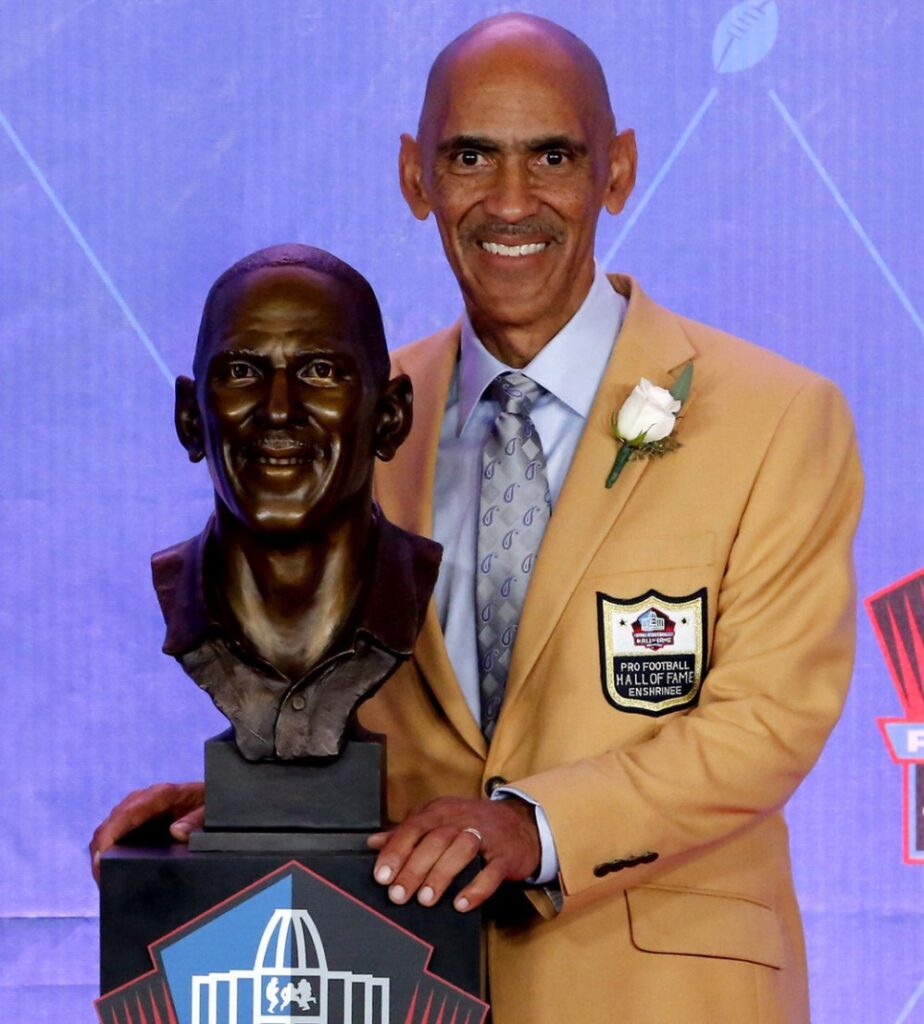
Throughout the years that I’ve played 40K, I’ve been fortunate enough to have some excellent “coaches,” other, better players who have taught me how to up my game. If you can find others who can coach you, great, but if not, experience is an excellent teacher (I’ve learned more from getting my ass kicked than I have from winning).
There are probably many other ways that football (or any other sport) is like 40K, but I’ve gone on long enough. Now go out there and lead the home team to victory!
Kenton Kilgore writes killer SF/F for young adults and adults who are still young. His most popular novels are Lost Dogs and Stray Cats, and now you can get them both for one low price in this Kindle box set, available only on Amazon for $4.99!

In Lost Dogs, when our world ends, their struggle begins! After inhuman forces strike without warning or mercy against mankind, Buddy, a German Shepherd, must band with other dogs to find food, water, and shelter in a world suddenly without their owners. But survival is not enough for Buddy, who holds out hope that he can find his human family again.
In Stray Cats, cats really do have nine lives–but they live them all at once, on different worlds. This follow-up to Lost Dogs features the adventures of Pimmi across the multiverse as she faces off against a cosmic menace threatening her and everyone she loves. But against such power, how can one small cat–even with nine lives–prevail?
Included in the boxed set are:
- An alternate ending for Lost Dogs;
- Lost Dogs original (2014) cover art;
- Excerpt from Kenton’s next fantasy novel, The Scorpion & The Wolf (coming 2024);
- Artwork from The Scorpion & The Wolf, by Alyssa Scalia
Dog lovers love Lost Dogs, and fans of felines adore Stray Cats. At last, you can have them both at one low price–get them now!
